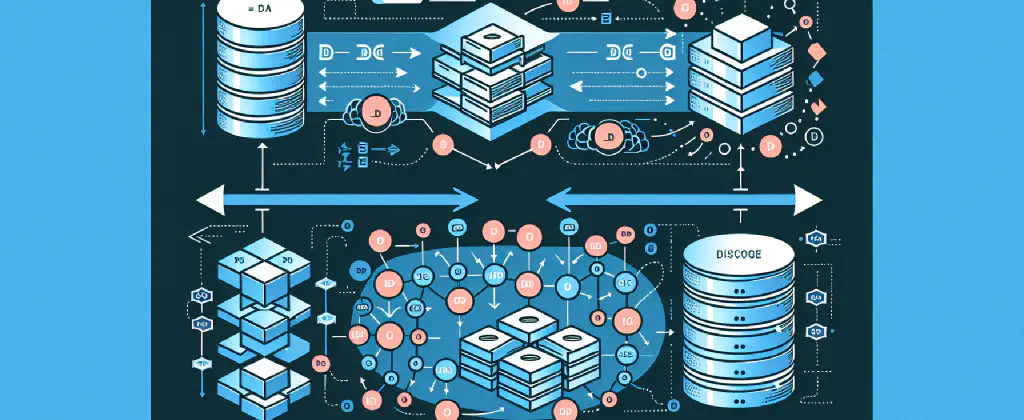15. December 2023
Database Fundamentals: From B-Trees to Distributed Systems

Introduction: Databases are the backbone of modern applications, storing and retrieving data efficiently. Understanding the fundamentals of databases is essential for anyone working with data-driven applications or aspiring to become a database professional. In this article, we explore the key concepts and technologies that form the foundation of databases, from traditional B-trees to the world of distributed systems.
B-Trees: The Power of Indexing
One of the fundamental concepts in databases is indexing, and perhaps the most well-known indexing structure is the B-tree. A B-tree is a balanced tree data structure that allows for efficient insertion, deletion, and retrieval of data. It plays a crucial role in improving query performance by providing fast access to the data through key-value pairs. Understanding how B-trees work and their impact on key insertion, lookup, and ordering is essential in comprehending the strengths and weaknesses of relational database management systems (RDBMS). However, it’s important to note that B-trees are not the only indexing strategy available. Hash indices, covering indexes, and other data structures have their own strengths and applications in certain scenarios.
LSM-Trees and Optimizations
While B-trees are commonly used in traditional databases, newer databases often incorporate Log-Structured Merge (LSM) trees. These data structures, like those found in RocksDB, provide high write performance and efficiency for large-scale data sets. LSM-trees excel in scenarios where there is a mix of read and write operations, with heavy write workloads. They address the issue of deletions and tombstones lingering for a long time, which is a characteristic of LSM-based DBs. RocksDB, for example, implements optimizations such as range deletions and deferred execution to improve performance and minimize the impact of tombstones on the system.
Distributed Systems: Embracing Complexity for Scalability
As applications and data grow in size and complexity, distributed systems become a necessity. Every non-trivial production system, at the very least, consists of a distributed database replica set. Distributed systems enable scalability, fault tolerance, and handling high availability requirements. However, the introduction of distributed aspects also introduces additional complexity. Linearizing concurrent access to shared resources and managing odd behaviors in interconnects require careful consideration. It is crucial to understand the design principles and trade-offs when building and maintaining distributed systems.
The Importance of Database Reliability
Reliability is a crucial aspect of databases, whether they are traditional RDBMS or modern distributed systems. Consistency is a key concern, both at the database level and the application level. Ensuring consistency across multiple tables when dealing with transactions involving updates to multiple tables is essential. All tables should be updated simultaneously or none at all to maintain data integrity. Understanding the concepts of database consistency and application consistency is vital when designing and implementing robust and reliable database systems.
Looking Beyond Databases: Formal Methods and Database Internals
As databases evolve and handle increasingly complex workloads, exploring formal methods can provide valuable insights into database internals and improve reliability. Applying formal methods to database systems allows for rigorous verification and analysis of system behavior and correctness. Formal methods, such as TLA+, have been used by the S3 team at Amazon Web Services to model and reason about distributed systems. Leveraging formal methods can enhance the design, implementation, and testing of databases, leading to more reliable and robust systems.
Conclusion: As we delve into the world of databases, from understanding the power of B-trees to exploring the complexities of distributed systems, we gain insights into the underlying technologies that drive modern data-driven applications. Whether you are a database professional, a developer, or simply interested in how databases work, grasping these fundamentals will empower you to design, build, and maintain efficient, reliable, and scalable database systems.
🔍 What’s your favorite aspect of databases? Let us know in the comments below!
Source: https://tontinton.com/posts/database-fundementals/